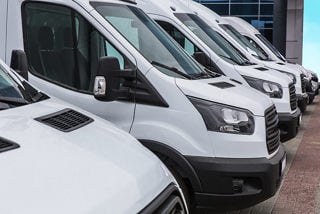
Fleet FAQ
Q:
What is road pricing and how does it work?
A:
Road pricing entails charging motorists for when and where they drive based on usage.
It is not a new concept, but the advent of cheaper, more advanced connected vehicle technology offers a simpler solution.
A national road pricing system could target congestion by imposing higher charges for popular stretches of road at the busiest times, thereby giving some road users the opportunity to amend the times of their driving according to a balance of necessity and cost.
Charging rates could also vary according to emissions standards, thereby maintaining the ‘polluter pays’ principle, and incentivising lower emissions vehicles. Such a system would need to be a tax-neutral replacement for other fiscal sources of revenue.
Such a system would need to be a tax-neutral replacement for other fiscal sources of revenue.
Road pricing is already used to cover particular stretches of road or areas for specific reasons.
More recently, we have clean air zones (CAZs) intended to improve local air quality by charging non-compliant vehicles.
National road pricing was first suggested in the Smeed Report of the mid-1960s, but has been hampered by a lack of suitable technology and the political will to do it.
It has always been regarded as too unpopular to implement.
Democratically-elected politicians are painfully aware that advocating the introduction of new taxes, however well intentioned, is unlikely to gain general popularity.
A petition against the introduction of road pricing attracted more than one million signatures.
However, falling tax revenues caused by the decline of petrol and diesel vehicles and the rise of the electric vehicle (EV), have seen the prospect of national road pricing regain momentum.
Where are we with road pricing?
The amount of revenue the Government takes from fuel duty, VAT on fuel duty, vehicle excise duty (VED) and company car tax – the big four taxes associated with the provision of cars – was £35 billion in the 2020/2021 tax year.
This breaks down to £21bn in fuel duty, £4.2bn in VAT on fuel duty, £7bn in VED and £2.5bn in company car tax.
Drive an EV and you don't need to visit a petrol station - there's no VAT from fuel duty going to the Treasury.
The proportion of EVs in use is set to increase dramatically in the coming years as the 2030 ban on the sale of new petrol and diesel cars and vans draws closer.
The duty shortfall could be addressed by increasing VED rates for EVs or by an increase in the benefit-in-kind (BIK) tax rates on the zero-emission technology.
A group of MPs on the Transport Select Committee (TSC) has suggested there is no viable alternative to the introduction of a national road pricing scheme.
“The Government must set out a range of options to replace fuel duty and vehicle excise duty. These options should be revenue-neutral and not cause drivers, as a whole, to pay more than they do currently,” said the TSC.
“One of those options should be a road pricing mechanism that uses telematics technology to charge drivers according to distance driven, factoring in vehicle type and congestion.
“If motoring taxation is linked to road usage, the committee has not seen a viable alternative to a road pricing system based on telematics.”
The TSC says the Government could implement a range of other policy responses to make up the shortfall in tax income.
For example, it could allow those duties to decline.
However, that would mean non-drivers subsidising drivers and might result in significant increases to other taxes or reduced public services.
Alternatively, a way may be found to price electricity used by vehicles differently. That could be done by introducing a surcharge on electricity used to charge vehicles.
However, this would require potentially costly new infrastructure because there is currently no mechanism that allows an electricity supplier to know if a householder is using a washing machine or charging their car.
Advances in technology make a national charging scheme viable. Local road charging initiatives, such as at the Dartford Crossing, rely on a network of automatic number plate recognition (ANPR) cameras mounted on gantries which monitor the traffic which passes through.
While this technology is fine for these applications, it is impractical for a scheme that would cover the entire country and every public road.
The TSC has identified telematics as the ideal solution for a national road pricing scheme.
This includes enabling a system where charges vary dynamically based on the road being used and the time of travel.
However, this isn’t a favoured option for fleets.
Fleet managers views expressed to Fleet News:
“I don’t see a dynamic rate working. I know the theory is it moves people’s pattern of driving, but too many people have to be on the road at those times. It’s not a balanced approach.”
“Road pricing is there to raise money for the Government. The system today is simple, it’s fair, everyone pays their share relevant to how far they go. I think we are risk of making it super complicated – I’d want a simple scheme that raises money for the Government.”
“It has to be a simple solution that people can understand. I’m not a fan of time-based. We do need to consider the difference between personal and business journeys. It needs to be done collaboratively. We have to keep people and goods moving the right way, so having a solution to do this efficiently as well as getting the revenue back is the ideal outcome.”
TSC believes that, in designing a replacement for fuel duty and VED, “the Government must examine how an alternative road pricing mechanism can use price as a lever for change while still subjecting motorists to fair levels of taxation”.
It says: “To that end, it may seek to make concessions in the interests of societal fairness, such as providing an annual allowance of free travel miles or gearing the system to support vulnerable groups, such as those with mobility issues and people who reside in the most remote areas.
“The introduction of an alternative road charging mechanism that supported motoring and motorists might work against the Government’s ambition for half of all journeys in towns and cities to be walked or cycled by 2030.
“The Government must ensure that any road pricing scheme does not undermine progress towards its targets on active travel and public transport modal shift.”
What is the future of road pricing?
The TSC has suggested that, in order to fulfil their respective and connected responsibilities for managing congestion and maintaining the public finances, the Department for Transport (DfT) and Treasury must jointly establish an arms-length body to evaluate its preferred options to replace fuel duty and VED.
It says the body should consult experts on road planning, taxation and telematics technology, and be tasked with recommending a mechanism to replace fuel duty and VED by the end of 2022.
One of the traditional obstacles to a road pricing scheme has been that advocating the introduction of new taxes, however well intentioned, is likely to be unpopular among voters – something democratically-elected politicians are all too aware of.
But there is evidence of a shift in attitude from the public, while behind the scenes it appears the Government accepts that introducing such an initiative is sensible and inevitable.
However, it has also not yet publicly responded to the report so it is unclear if and when the measure will become a reality.

















